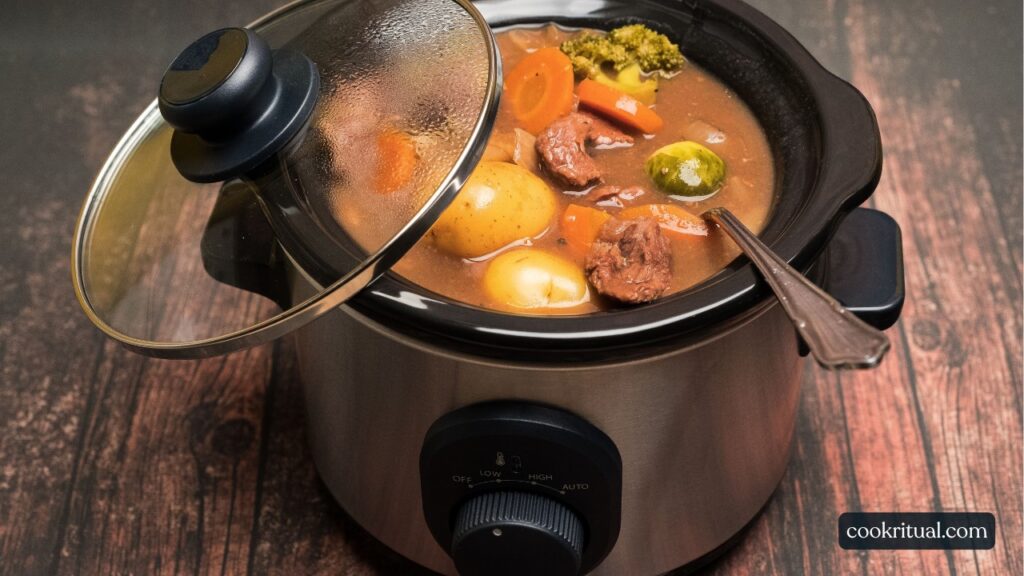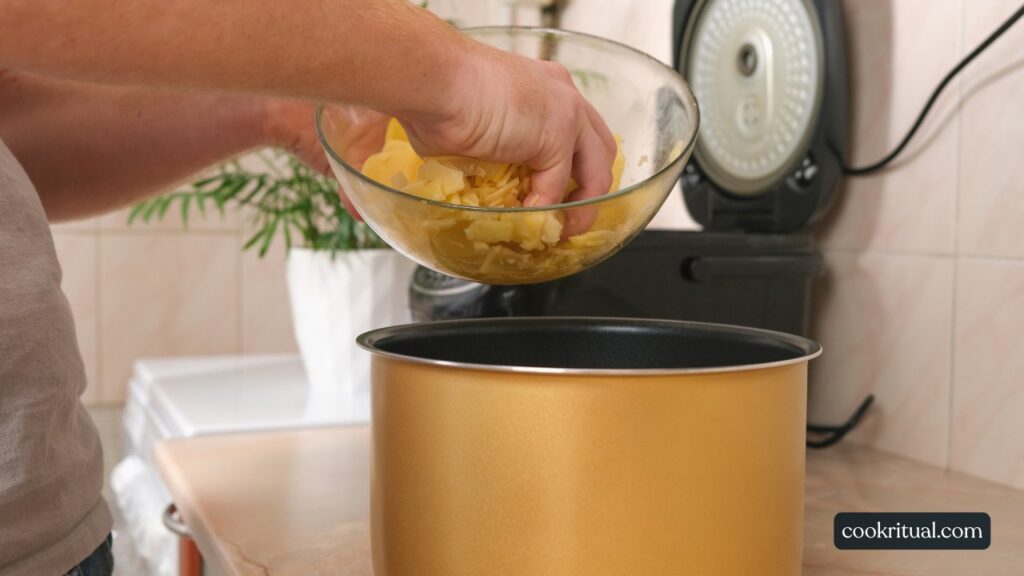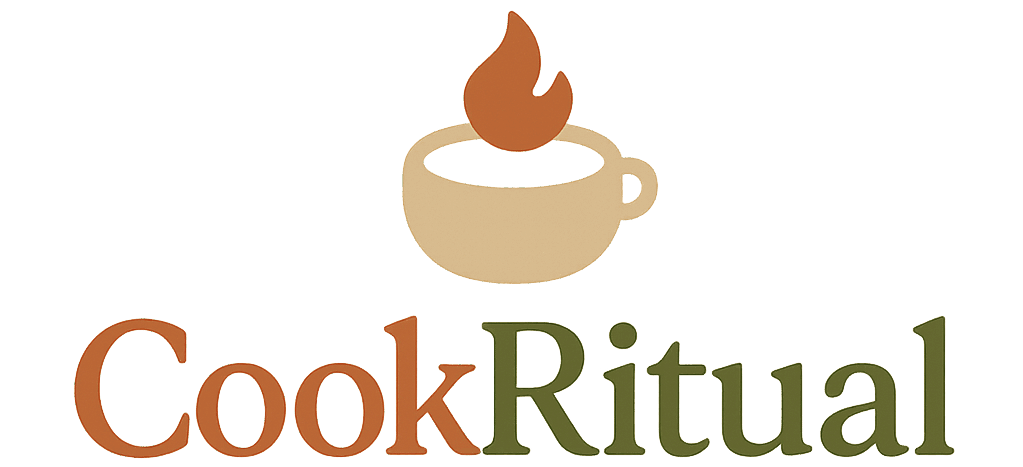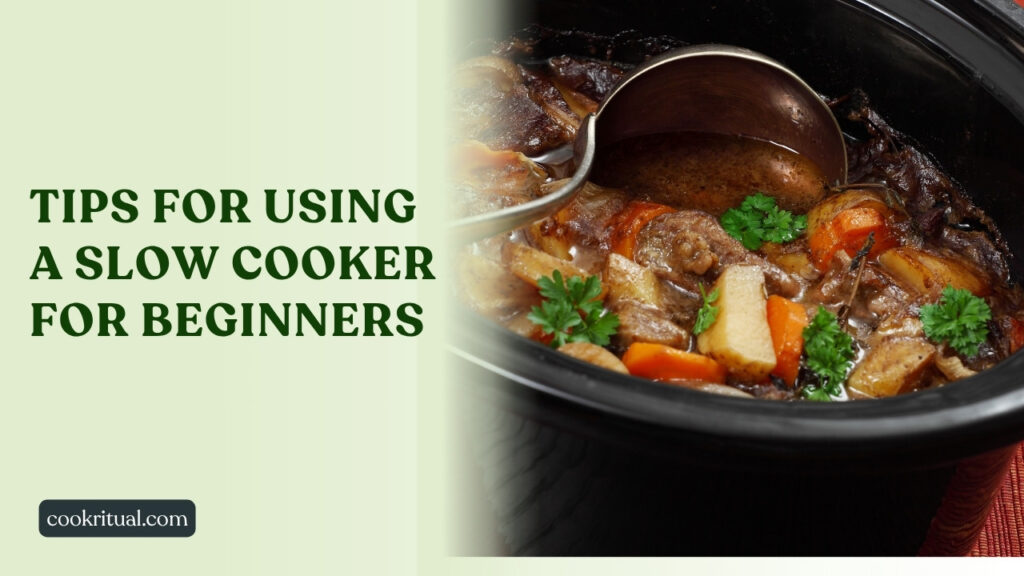Using a slow cooker is one of the easiest and most convenient ways to prepare healthy, delicious meals with minimal effort. For busy professionals and health-conscious individuals alike, slow cooking offers a simple solution to enjoy nutritious home-cooked food without spending hours in the kitchen. Whether you’re new to this versatile appliance or just looking to improve your slow cooking skills, learning the basics and practical tips can transform your meal prep routine and save you time.
Many beginners feel overwhelmed by questions like “How do I start?”, “What recipes work best?”, or “How can I avoid common mistakes?” This guide will walk us through everything we need to know about using a slow cooker confidently—from understanding the appliance and its benefits to actionable tips and recipe ideas. By the end, we’ll be ready to make the most out of our slow cooker, creating meals that nourish and satisfy.
Contents
- 1 Understanding Your Slow Cooker: Basics & Features
- 2 Benefits of Using a Slow Cooker for Beginners
- 3 Step-by-Step Guide: How to Use a Slow Cooker for Beginners
- 4 Slow Cooker Cooking Tips & Best Practices
- 5 Slow Cooker vs Other Appliances: What Beginners Should Know
- 6 Maintenance and Cleaning Tips for Your Slow Cooker
- 7 Buying Guide: How to Choose the Right Slow Cooker for Beginners
- 8 Frequently Asked Questions About Slow Cookers
- 9 Conclusion: Mastering Slow Cooking for Easy, Healthy Meals
Understanding Your Slow Cooker: Basics & Features

What Is a Slow Cooker and How Does It Work?
A slow cooker is a kitchen appliance designed to cook food slowly over low heat for several hours. It works by gently heating food inside a ceramic or metal pot, which sits inside an insulated heating element. This slow heat breaks down tough ingredients like meat and beans, making meals tender and flavorful without much effort. Slow cookers are perfect for busy people who want to prepare meals in the morning and come back to a ready-to-eat dinner.
You can learn more about slow cooker basics from the USDA’s slow cooker tips.
Different Slow Cooker Settings Explained
Most slow cookers have three main settings: low, high, and keep warm. The low setting cooks food gently over 6 to 8 hours, while high cooks faster, usually in 3 to 4 hours. The keep warm mode keeps the food at a safe temperature without cooking further. Knowing when to use each setting helps prevent overcooking and keeps meals tasting their best.
Types of Slow Cookers: Basic vs Programmable
There are two main types of slow cookers. Basic models have simple controls and heat settings, which are great for beginners. Programmable slow cookers offer timers and automatic shut-off features, making them perfect for busy professionals who want extra convenience. Some models even have smartphone apps for remote control.
Common Slow Cooker Accessories for Beginners
To get the most out of your slow cooker, consider adding accessories like ceramic inserts, steam racks, and lid lifters. These help with cooking different types of meals and make cleanup easier. Having the right tools can improve your cooking experience and expand what you can make.
Benefits of Using a Slow Cooker for Beginners

Time-Saving Advantages of Slow Cooking
One of the biggest benefits of using a slow cooker is how it saves time. You can prepare ingredients quickly in the morning, set the cooker, and have a meal ready hours later without standing by the stove. This hands-off approach fits well with busy schedules and reduces stress around meal prep.
Energy Efficiency Compared to Other Cooking Methods
Slow cookers use less electricity than ovens or stovetops. This means they are not only good for saving time but also for lowering energy bills. According to the U.S. Department of Energy, using energy-efficient kitchen tools like slow cookers helps reduce household energy use.
How Slow Cooking Enhances Flavors and Nutrition
Cooking food slowly allows flavors to blend and develop deeply. Slow cooking also helps retain nutrients better than high-heat methods because it uses lower temperatures for longer periods. This makes it easier to prepare meals that are both tasty and healthy.
Ideal Meals and Recipes Suited for Slow Cookers
Slow cookers are perfect for soups, stews, chili, pulled meats, and vegetable dishes. They work well with tougher cuts of meat that become tender with long cooking. Beginners should start with easy recipes like chicken stew or vegetable chili to build confidence.
Step-by-Step Guide: How to Use a Slow Cooker for Beginners

Preparing Ingredients for Slow Cooking
Before adding ingredients to the slow cooker, chop vegetables into even pieces to ensure they cook evenly. Brown meat in a pan if you want richer flavor, but this step is optional. Using fresh herbs and spices helps enhance the taste of slow-cooked meals.
Tips for Layering Food Correctly
Place root vegetables like potatoes and carrots at the bottom because they take longer to cook. Layer meat and softer vegetables on top. This method ensures everything cooks properly and prevents overcooking.
Choosing the Right Cooking Time and Temperature
Use the low setting for most recipes if you have time, as it produces better flavor and texture. If you’re short on time, the high setting will work but check the food earlier. Always follow the recipe’s recommended cooking times to avoid dry or undercooked meals.
How to Safely Check and Stir Food During Cooking
Try not to open the slow cooker lid too often, as this releases heat and extends cooking time. If stirring is necessary, do it quickly and replace the lid to keep the temperature steady.
Meal Prep Ideas Using a Slow Cooker
Slow cookers are great for batch cooking. Prepare large meals like soups or chili and store leftovers for the week. This helps save time on busy days and encourages healthy eating habits.
Slow Cooker Cooking Tips & Best Practices
Common Slow Cooker Mistakes and How to Avoid Them
Many beginners make simple mistakes like adding too much liquid or overfilling the slow cooker. Because slow cookers trap moisture, recipes usually need less water than stovetop versions. Overfilling the pot can also cause uneven cooking. Following recipe guidelines closely helps prevent these issues. For more common mistakes and solutions, visit Crock-Pot’s official tips.
Slow Cooker Safety Tips to Prevent Accidents
Safety is important when using any kitchen appliance. Always place the slow cooker on a flat, heat-resistant surface away from edges. Avoid using damaged cords or plugs. Keep the lid on during cooking to maintain proper temperatures and kill bacteria. According to the USDA Food Safety, following these safety tips ensures your food is both tasty and safe.
How to Adjust Recipes for Slow Cooking
Not all recipes are designed for slow cookers. When adapting recipes, reduce the liquid by about one-third because slow cookers keep moisture in. Also, add dairy products like milk or cream at the end of cooking to prevent curdling. You can find more recipe adjustment advice at Serious Eats’ slow cooker guide.
Using Frozen vs Fresh Ingredients in Slow Cookers
It’s best to thaw frozen meat before adding it to a slow cooker to ensure even cooking and food safety. Fresh ingredients tend to cook more evenly and develop better flavors. Always follow USDA recommendations on cooking times for frozen foods in slow cookers to avoid risks.
Tips to Prevent Food from Drying Out or Overcooking
To keep food moist, avoid lifting the lid frequently. Use the right cooking setting and don’t extend cook times unnecessarily. Adding a bit of broth or sauce can help maintain moisture. Using a programmable slow cooker with timers can reduce the chance of overcooking.
Slow Cooker vs Other Appliances: What Beginners Should Know
Slow Cooker vs Pressure Cooker: Key Differences
A slow cooker cooks food over several hours at low heat, perfect for tenderizing tough ingredients. A pressure cooker cooks food quickly under high pressure, reducing cooking time drastically. Beginners should choose a slow cooker when they want hands-off, slow meals and a pressure cooker for fast results. For a full comparison, check out America’s Test Kitchen slow cooker vs pressure cooker guide.
Slow Cooker vs Oven Cooking: Pros and Cons
Slow cookers use less energy and require less attention than ovens. They are safer to leave unattended and great for one-pot meals. Ovens can brown and crisp food better but need more active cooking time. For energy-saving tips with kitchen appliances, visit the Department of Energy.
When to Use a Slow Cooker and When Not To
Use a slow cooker for soups, stews, braised meats, and meals that benefit from slow heat. Avoid it for quick-cooking dishes or foods needing crispy textures, like roasted vegetables or baked goods. Understanding your recipe needs helps decide the best appliance for the job.
Maintenance and Cleaning Tips for Your Slow Cooker
How to Clean Your Slow Cooker Properly
Always unplug your slow cooker before cleaning. Remove the ceramic insert and wash it with warm, soapy water or place it in the dishwasher if it’s dishwasher-safe. Clean the lid and heating base carefully with a damp cloth. Avoid submerging the heating element in water. For detailed cleaning advice, see Good Housekeeping’s slow cooker care tips.
Tips to Maintain Your Slow Cooker for Long-Term Use
Avoid sudden temperature changes, like placing a hot insert on a cold surface, to prevent cracks. Store with the lid off or loosely placed to avoid odors. Regularly check cords and plugs for damage. Proper care will keep your slow cooker working efficiently for years.
Troubleshooting Common Slow Cooker Problems
If your slow cooker isn’t heating, check the power source and connections. Uneven cooking may be fixed by proper layering of ingredients or adjusting cooking times. For more troubleshooting help, visit The Spruce Eats troubleshooting guide.
Buying Guide: How to Choose the Right Slow Cooker for Beginners
Key Features to Look for in a Slow Cooker
When buying a slow cooker, focus on size, settings, and ease of use. A 4 to 6-quart size is ideal for most families. Look for models with programmable timers and automatic shut-off for convenience and safety. Removable, dishwasher-safe inserts make cleaning easy. Brands like Crock-Pot and Hamilton Beach offer great beginner-friendly options.
Budget-Friendly Slow Cooker Options
You don’t need to spend a lot for a good slow cooker. Many budget models include basic features and reliable performance. Shopping during sales or using online marketplaces can help find deals. Reviews on sites like Consumer Reports provide trusted recommendations to choose the best value for your money.
When to Upgrade Your Slow Cooker
If you cook often or want more control, consider upgrading to a programmable slow cooker with Wi-Fi or multi-cook functions. Some newer models combine slow cooking with pressure cooking or air frying. Upgrading can save time and expand your recipe options.
Frequently Asked Questions About Slow Cookers
Can You Leave a Slow Cooker On Overnight?
Yes, slow cookers are designed for long, unattended cooking. Just make sure to follow safety guidelines, use the right setting, and don’t overfill the pot. The USDA advises that using slow cookers properly keeps food safe overnight.
How Do You Prevent Food from Overcooking in a Slow Cooker?
Use the low setting when possible and follow recommended cooking times. Avoid opening the lid too often, and consider using a programmable model with timers to automatically switch to keep-warm mode after cooking.
Can You Cook Frozen Meat in a Slow Cooker?
It’s safer to thaw meat before cooking in a slow cooker. Cooking frozen meat can keep it in the “danger zone” too long, risking bacteria growth. The USDA food safety tips recommend thawing meat first.
What Are Some Easy Slow Cooker Recipes for Beginners?
Start with simple recipes like chicken stew, beef chili, or vegetable soup. These use common ingredients, require minimal prep, and have forgiving cook times. Many recipe sites, like Allrecipes, offer beginner-friendly slow cooker recipes.
Conclusion: Mastering Slow Cooking for Easy, Healthy Meals
Slow cooking is a fantastic way for beginners to enjoy homemade, healthy meals with less stress and more flavor. By understanding your slow cooker’s features, following simple tips, and choosing the right recipes, you can save time and eat better every day. Whether you want to meal prep, save energy, or explore new cooking styles, slow cooking offers endless possibilities.

